As RedGrittyBrick says, that is a 10000 picofarad capacitor. That's from the "103Z" marking. "10" picofarads with "3" zeroes = 10pF*1000= 10000pF= 10 nanofarads. "Z" is the tolerance. It means "+80% to -20%." The tolerance is rather wide. A more typical value would be "J" for "+-5%."
See here for a complete description of all ceramic disk capacitor markings.
You also need to pay attention to the line below the value. It says "1kV." That means you need a part that is rated to withstand 1000 volts.
You need a replacement part that meets the value, the tolerance, and the voltage specifications of the original.
I've had a look at the schematic for the Icom IC-PS15 power supply.

Those four 10nF capacitors around the bridge rectifier should never be exposed to enough voltage to destroy them. Something really bad happened to that power supply. You should be prepared to replace nearly all components in it. Whatever killed the rectifier and those capacitors could have killed numerous other parts as well.

